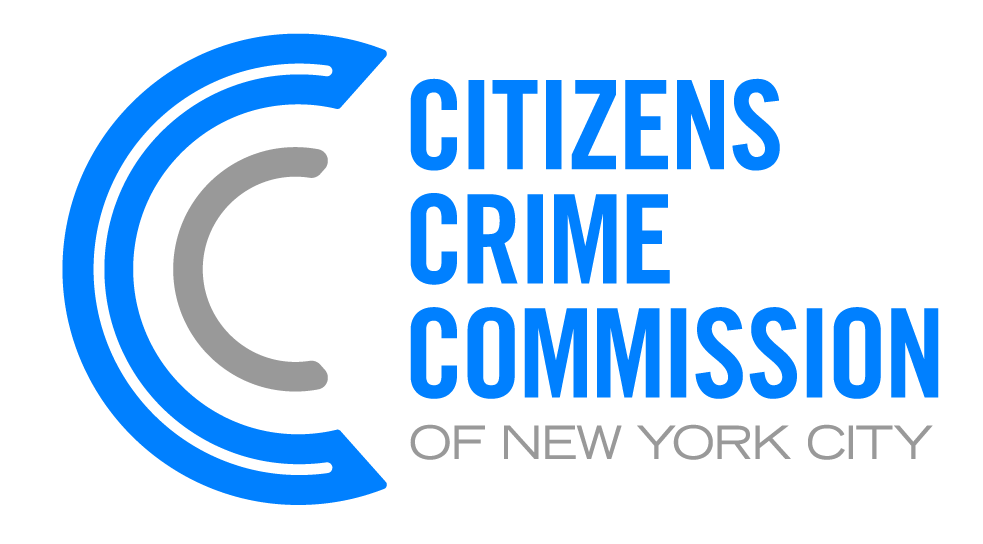Prevention Resources
Trainings & Curriculums

E-Responder
Social media is the new space of conflict, as youth involved in gun violence use it as an extension of their daily lives. Often, crew-involved youth use social media to taunt and threaten rivals, share criminal activity, freely discuss shootings and past violence, buy and sell weapons, engage in arguments, and express grief and emotional distress. Such behavior amplifies and accelerates conflicts, resulting in real-world shootings and murders.
Working with our NYC Cure Violence partners and researchers at New York University, the CCC created E-Responder, a multi-tiered approach designed to prevent the escalation of violence on social media and facilitate healthy expression by building on youths' strengths and skills to promote long-term growth and development.
E-Responder was designed to reach youth in new, virtual spaces, and takes an evidence-based approach to addressing three key goals:
- Preventing the escalation of online provocation that can lead to in-person violence
- Building life skills in youth such as leadership, emotion regulation, empathy, perspective-taking, and sociopolitical development
- Supporting anti-violence professionals in effectively using social media to promote digital citizenship and raise awareness about social media violence
E-Responder does more than de-escalate and intervene with risky behavior; it encourages prosocial behavior by providing youth a place to explore, practice, and build important life skills. The E-Responder intervention is delivered through an Interruption Toolkit and a Youth Leadership Program, described in detail in the E-Responder Evaluation Briefs.
Training in E-Responder is effective for any organization that works closely with young people. To inquire about E-Responder training, please email Jai Thomas at thomas@caasny.com.
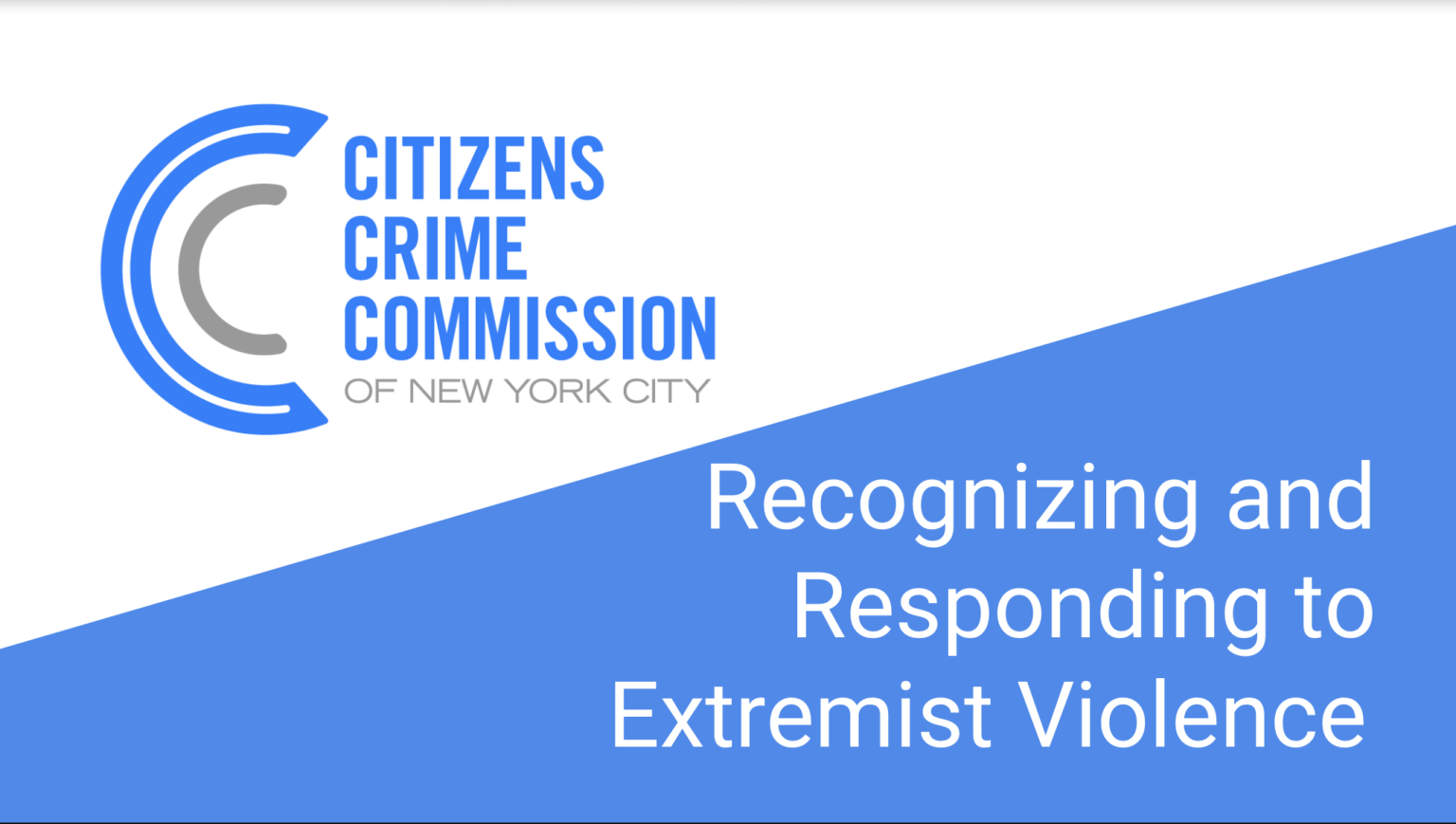
Recognizing and Responding to Extremist Violence
Connecting mobilizing individuals to the proper mental health treatment is an essential step in preventing extremist violence. Through our work in early interventions, the CCC identified extremist demobilization as an area where mental health professionals may benefit from further education and training. Many mental health professionals are unaware of the signs of escalation toward extremist violence or are unsure of how to respond. To fill that gap, the CCC has developed a training program aimed at mental health professionals who may be interacting with individuals mobilizing unbeknownst to them. The goal of this training is to educate mental health professionals on identifying warning signs and indicators, as well as provide current research on the appropriate interventions to address this issue. For more information, please contact henderson@caasny.com.
Featured Reports
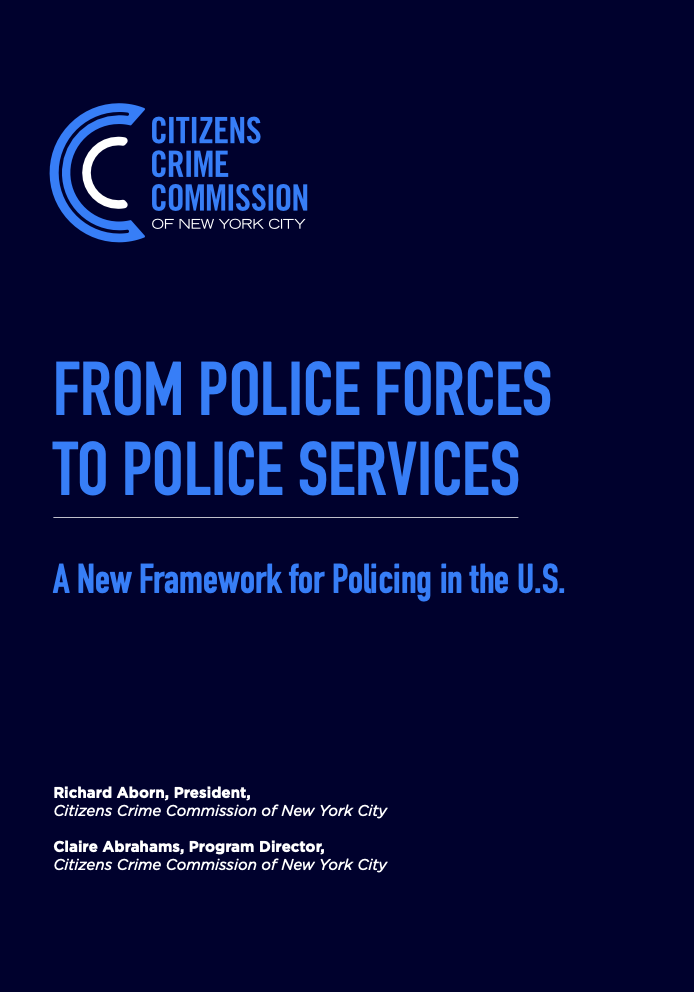
From Police Forces to Police Services (2021)
The crisis around police legitimacy requires our full collective efforts to resolve. Its impact is immediate, troubling, drives a deeper wedge between police and communities and is disruptive of crime reduction and prevention. No one benefits. We are seeing sharp rises in shootings and murders, and legislative bodies reducing funding to police agencies - the very agencies charged with crime reduction.
In this report we call for the reorientation of policing in the United States, from Police Forces to Police Services.
Responding to the Complexities of Trauma (2018)
Justice-involved youth are suffering harsh, too-frequent experiences of trauma across environments/contexts/settings. These severe experiences can lead to complicated grief, feelings of betrayal, and difficulties identifying and maintaining healthy relationships. When making decisions that impact youth, we must listen to and include youth voices. Listening to youth will provide critical insights on how to engage in strategies that work to heal, rather than unintentionally harm our already vulnerable young people. The current article was published as a part of Orange U Going's Solutions to Youth Criminalization magazine and conference.
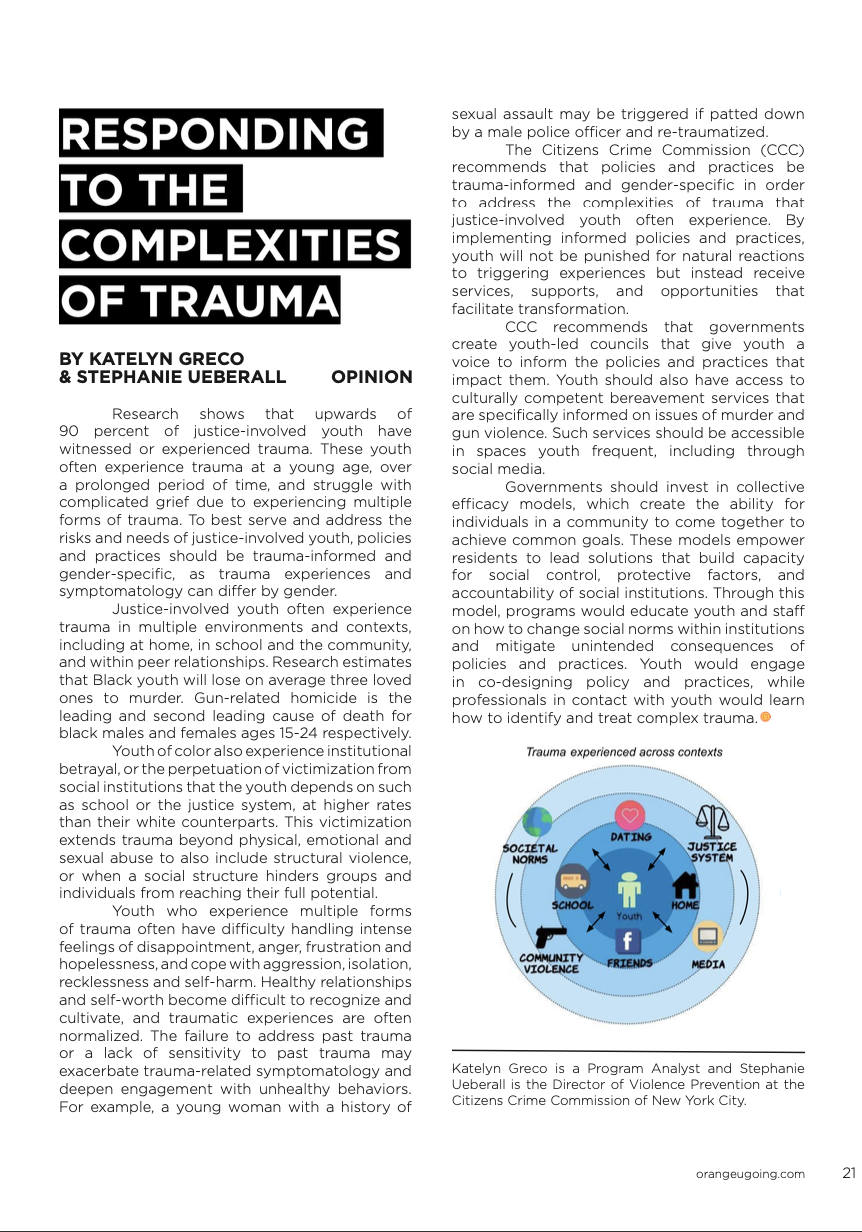
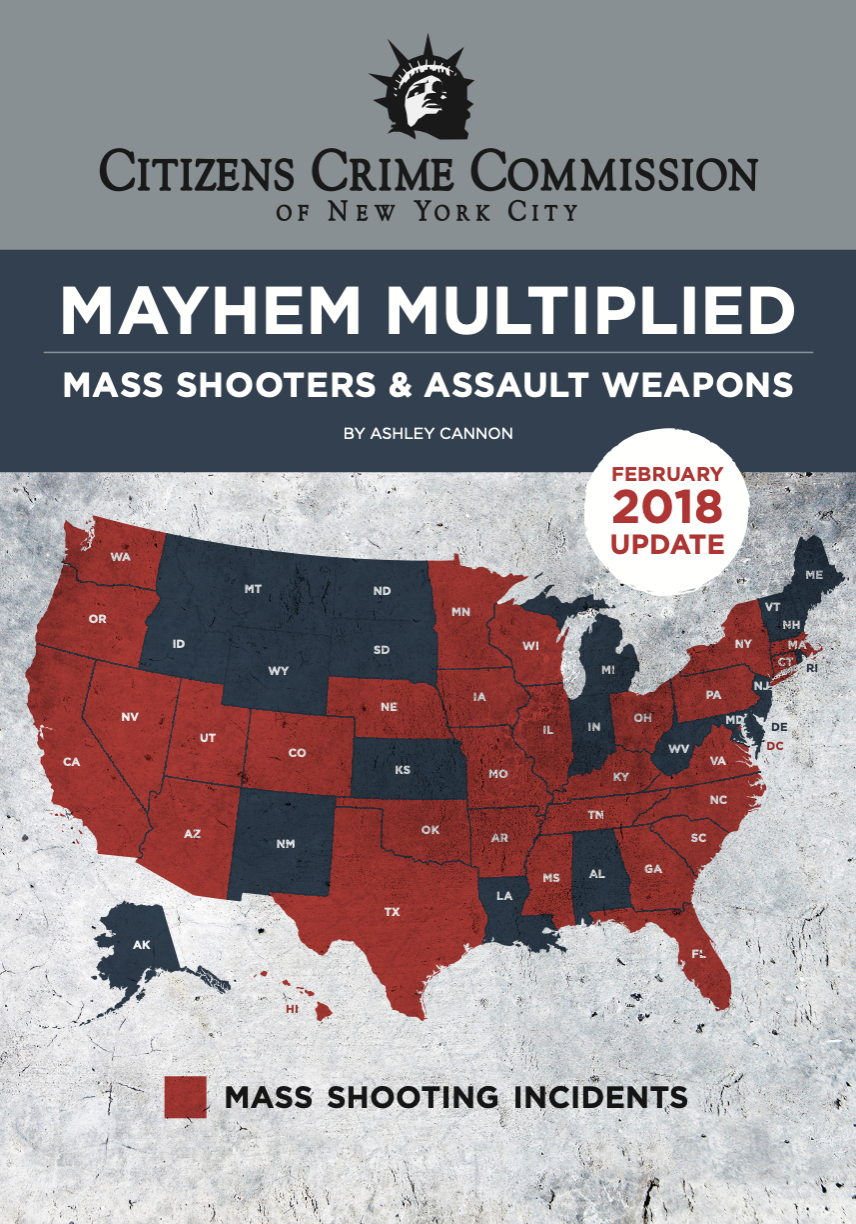
Mayham Multiplied: Mass Shooters & Assualt Weapons (2018 Update)
Mass shootings have taken place consistently throughout American history, in every region of the country. Over the last 30 years, however, assault weapons and large-capacity ammunition magazines—which hold more than 10 rounds—have proliferated, allowing assailants to become much more destructive. Crime Commission analyses show, the results have been deadly for Americans.
Past Reports
E-Responder was developed by the Crime Commission in partnership with NYU and NYC Cure Violence to intervene with youth in new, virtual spaces of conflict. This third and final evaluation demonstrates that E-Responder had significant effects on two critical outcomes, both of which are predicted to facilitate positive long-term results for youth: (1) resilience, by building on youths' existing strengths, coping skills and empowering them to face adversity and grief; and (2) sociopolitical awareness, by providing youth with the vocabulary and opportunity to discuss topics such as inequality, oppression, privilege and race. The findings from the three research briefs demonstrate the effectiveness of E-Responder as an intervention engaging youth online, where they are highly involved and literate and moreover, that E-Responder is more than an intervention model; it is an early-prevention strategy.
The high visibility of harmful behavior, trauma, grief, and emotional distress on social media gives service providers the opportunity to know exactly who is at the highest risk for committing or being victimized by violence and in greatest need of service. We need to capitalize on this opportunity by giving anti-violence professionals a new method of responding to risky social media use. As modes of communication have changed to favor online spaces, so too must our interventions.
Grief and trauma are critical drivers of violence and play significant roles in why young people become involved in crews, how conflicts become seriously violent, and underlying reasons for engaging in retaliatory violence. In order to cope with trauma and complicated grief, crew-membership and violence emerge as ways to receive social support, emotional release, safety, and purpose. In order to ensure we are meeting youths' needs holistically and preventing violence in the long-term we must include these life experiences when developing programs and policies.
Increasingly, real-world violence follows fights started online, as social media amplifies and accelerates conflict. Results from the Citizens Crime Commission's E-Responder pilot study with NYU and NYC Cure Violence demonstrate the effectiveness of our innovative digital intervention in preventing virtual and real-world violence between youth involved in gun violence.
E-Responder was presented at the Society for Community Research and Action (SCRA) 2017 Biennial Conference "Transformative Community Psychology" in Canada to discuss the innovative approach of conducting intervention through social media, research study, and results.
Gun violence at U.S. colleges has exploded in recent years, increasing from just 12 incidents during the 2010-2011 school year to nearly 30 in 2015-2016 school year—and the number of shooting victims has also spiked to a disturbing level. Given that studies have shown that gun violence victimization and mere exposure to gun violence can lead to poor academic performance, disruptions at school or work, relationship problems, and lasting emotional distress — and, of course, the physical danger that shootings put students in — it is clear that the public needs to become more aware of campus safety. As our research shows, between the 2001-02 and 2015-16 school years, 437 people were shot, including 167 killed and 270 wounded, on or near U.S. college campuses. An estimated 2.5 million students were enrolled at the 142 colleges where the 190 recorded shootings occurred, and, thus, were directly or indirectly exposed to gun violence.
E-Responder was developed by the Crime Commission in partnership with NYU and NYC Cure Violence to intervene with youth in new, virtual spaces of conflict. The Youth Leadership Program supports this mission by providing youth the opportunity to learn, build, and enhance life-skills that prevent violence and promote long-term success. In this second evaluation, results demonstrate the effectiveness of the Youth Leadership Program and the positive impacts the program had on youth.
On social media, a recognized set of norms have not caught up with the speed in which social media has been adopted into our lives, leading to ambiguity concerning what behavior is appropriate. This paper explores the unique features of social media and their impact on behavior and social norm creation. Understanding the unique landscape of social media will assist others in understanding why problematic behavior—such as cyberbullying, threats, prejudice, violence, and harassment—continue to be pervasive in this space and what steps stakeholders can take to change norms and create a positive online environment for expression, engagement, and connection.
